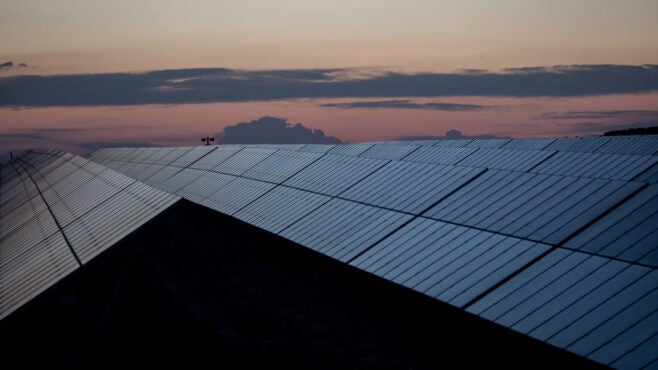There is a real danger the public’s response to the Intergovernmental Panel on Climate Change’s (IPCC) latest report will be resignation and despair. To be sure, many of the takeaways from the first installment of the IPCC’s Sixth Assessment Report are grim.
“Many of the changes observed in the climate are unprecedented in thousands, if not hundreds of thousands of years, and some of the changes already set in motion – such as continued sea level rise – are irreversible over hundreds to thousands of years,” writes the IPCC.

For parents and families still recovering after more than a year and a half of Covid-19-related uncertainty, dislocation and loss, the warnings are almost an invitation to conclude all is lost. That would be a mistake.
For in almost the very next breath, the IPCC pleads with us not to give up.
“Strong and sustained reductions in emissions of carbon dioxide (CO2) and other greenhouse gases would limit climate change,” the UN climate science body says. “While benefits for air quality would come quickly, it could take 20–30 years to see global temperatures stabilise.”

US Tariffs are shifting - will you react or anticipate?
Don’t let policy changes catch you off guard. Stay proactive with real-time data and expert analysis.
By GlobalDataWe can focus on irreversible changes – over human lifetimes, at least – to ice sheets and sea levels, or we can see almost immediate improvements in air quality and the potential for global temperatures to stabilise within the lifetimes of many readers of this column, by accelerating the clean energy trends already under way. The choice is ours.
In the years since the publication of the last IPCC assessment report in 2014, hundreds of climate scientists around the globe have laboured to provide policymakers and the public with a clearer picture of the current state of the Earth’s climate. With the release of the new IPCC report, those scientists have affirmed it is “unequivocal” that humans are responsible for warming the atmosphere, oceans and land; that the scale of recent changes to the climate are “unprecedented” over recent millennia; and that “human-induced climate change is already affecting many weather and climate extremes in every region across the globe”.
The science has caught up with the reality broadcast by news outlets, or shared on social media, every day around the globe – be it wildfires and drought in California, flooding in Germany, or extreme heat and cold in Texas. Sceptics who won’t be persuaded by a UN climate science report might be convinced of the need to act to prevent further climate change because they have seen changes with their own eyes.
In this new reality, sometimes the impacts of even distant climate-driven disruptions are felt and seen close to home. Last month, tourists and locals gathered on the eastern shore of Lake Champlain, in Burlington, Vermont, US, to take photos at sunset. Your correspondent, on vacation, was among them (as a journalist, you are never off duty).
[Keep up with Energy Monitor: Subscribe to our weekly newsletter]
The chatter that night among the assembled gaggle was the haze – air quality had reached unhealthy levels that day – and the iridescent sky. Smoke from wildfires in Oregon and California had drifted east, smothering much of New England in a layer of soot that set the sky ablaze and endangered the health of people who lingered outdoors. To my surprise, most of the picture-takers that night had already made that connection between fires 3,000 miles away and the Instagram-worthy sunset. Will rising awareness of the links between human-caused climate change and increased wildfires and heat waves, droughts and floods translate into calls for political action?
We shall see. Based purely on economics, it is much easier for policymakers to support climate action today than it was when the IPCC completed its last assessment report in 2014. Falling prices have made clean energy cheaper than fossil fuels in much of the world. The global benchmark levelised cost of electricity in the first half of 2021 for utility-scale solar PV, $48 per megawatt-hour (MWh), and onshore wind, $41/MWh, were down as much as 87% and 63%, respectively, since 2010, according to research company BloombergNEF. In China, India and Europe, new-build solar power is cheaper to run than existing coal-fired power plants.
“The economic incentive to deploy large amounts of solar power just got stronger in India, China and most of Europe,” says BloombergNEF’s Tifenn Brandily. “If policymakers can recognise this swiftly, this could prevent the emission of billions of tons of CO2.”
“Dangerous climate change has arrived,” Pennsylvania State University climate scientist Michael Mann told Energy Monitor’s Philippa Nuttall Jones about the new IPCC report. “It is now a matter of us deciding how bad we are willing to let it get.”
If citizens conscious of the climate change happening before their eyes increasingly demand that politicians support clean energy over fossil fuels, we will have at least succeeded in limiting future damage.





